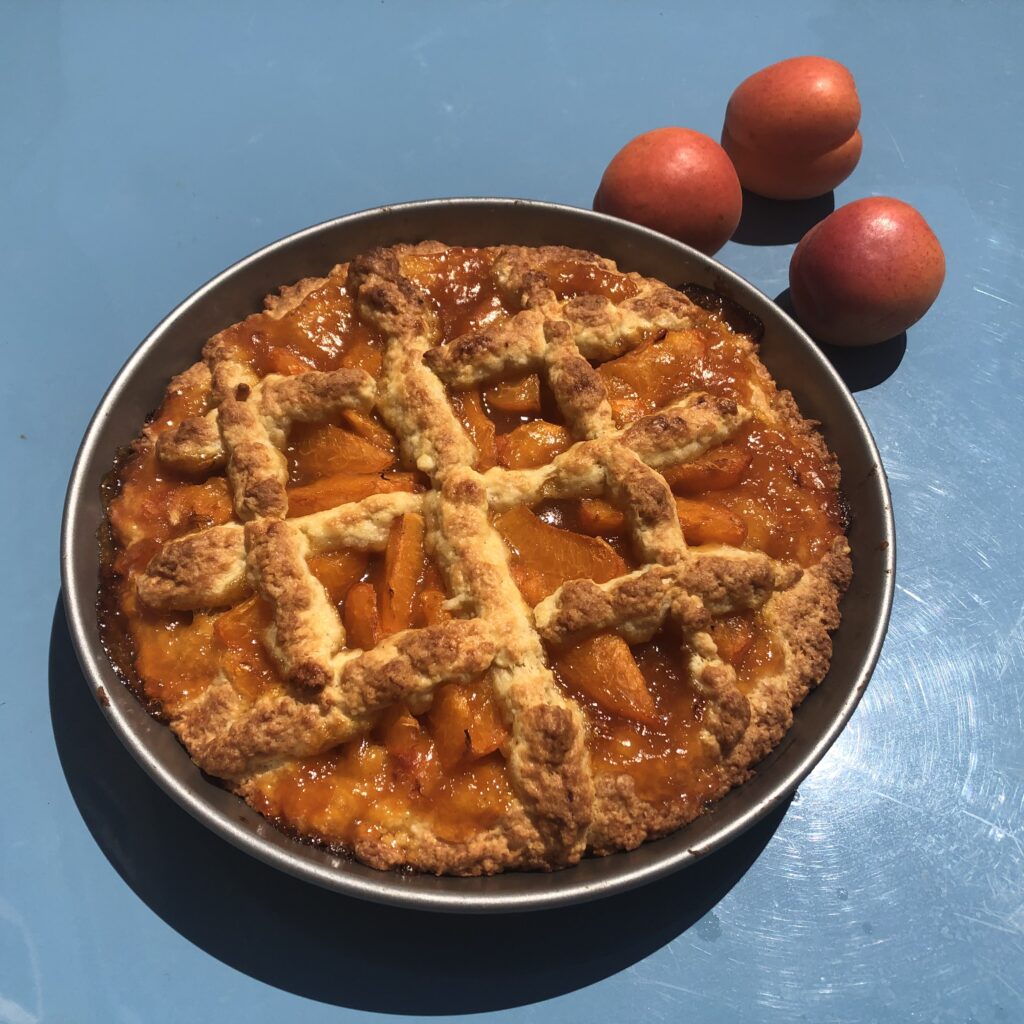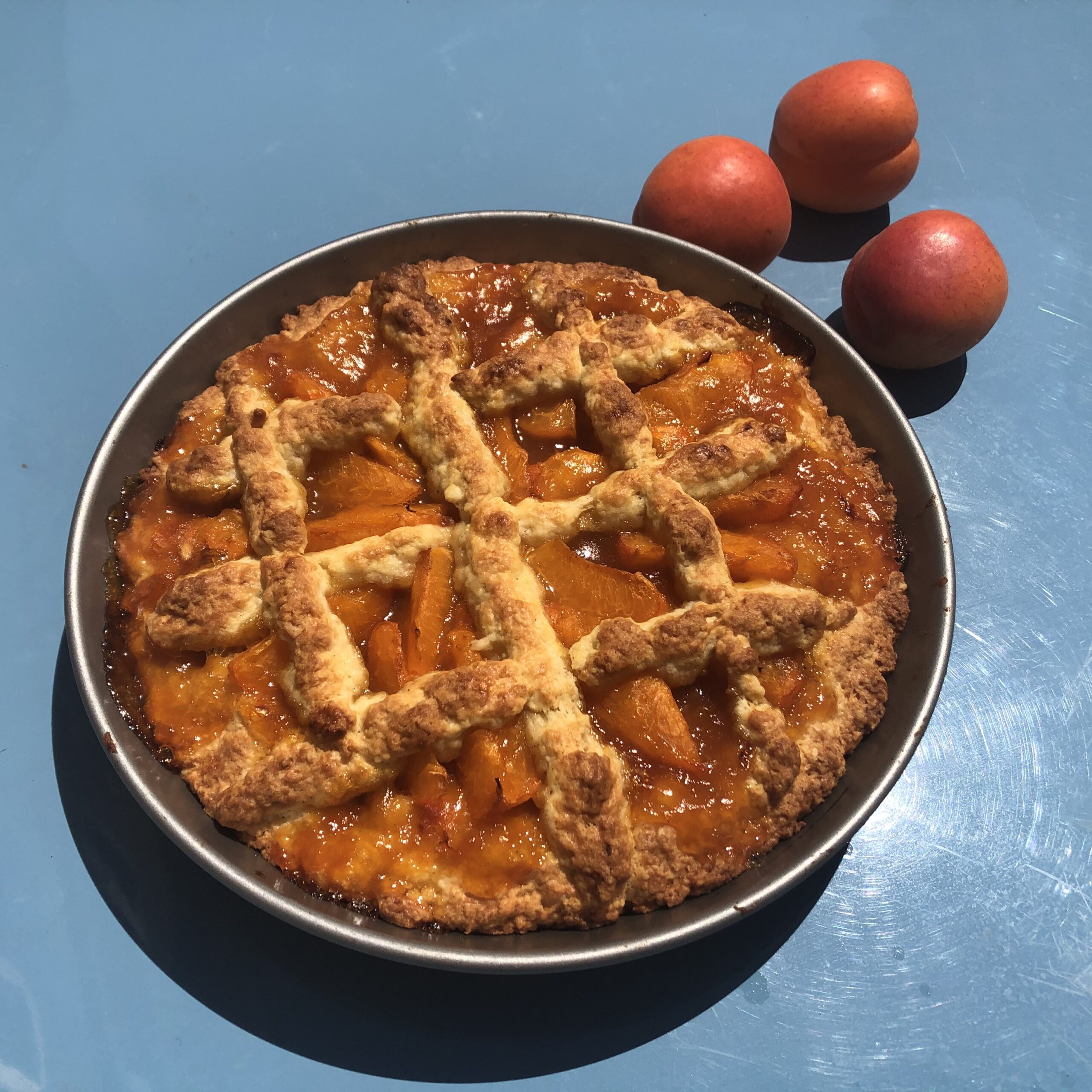Unless you are a professional, you will find the tart to be a high maintenance, unforgiving whistle blower of a pastry.
Sloane Crosley

The Young American in her Speedo ambles to the shore of the bay. Excited, the Pietra Santa Lifeguards take out their binoculars to watch her slice through the water with barely a ripple behind her. ‘What speed! What form! Can you believe we have a champion on our beach?,’ they exclaim.
The Young American’s body disappears into the hazy horizon and they turn to each other, worried.
‘We have to tell her Aunt Rossana that we can’t save her if she gets into trouble. She’s too far out.’
‘You’re right. We’re not characters on Baywatch here…’
After an hour, the Young American resurfaces past the mole and they cheer as she crawls to shore. ‘We need to start training again,’ they mutter.
The two men watch her hop over the burning sand to the shade of her umbrella. Without drying off, she opens a paper bag, takes out a large piece of crostata and sinks her teeth into it.
‘She’s tiny. I don’t know where she puts it,’ they wonder.
The Lifeguards then light up their cigarettes, grateful that the drama of the day is over and they can finally exhale.
My niece and nephew came to visit me back in 2010, and like all teenagers, they ate me out of house and home. Crostata, the Italian version of a jam tart, was their favourite sweet to devour after their morning laps in the sea, so I bought slabs as large as ironing boards to put fuel in their tanks before the onslaught of lunch.
I am not a baker, but recently I have been toying with this aggressively simple tart to come up with a version I can call my own.
Crostata can be made with any jam, but the acidic ones are the best foils for the sweet pastry. Think sour cherry, apricot and plum. The Italians love to use their sour cherry jams called amarene and visciole, but I am partial to apricot, and could imagine that a brazen blackberry would work well too. Strawberry or blueberry jam in this case are too demure.
Jam tarts are perfect for picnics or the beach as they travel so well and last around three days. However, they are extremely sweet. I added fresh apricots to my crostata along with the jam to cut through the cloying sugar, and am so pleased with the result that I will experiment with cherries and prune plums when their seasons arrive. The only drawback is that my version is not “a keeper” and tastes best on the first day.
Lazy as I am, I hate the mess that flour leaves behind when one is making pastry, and don’t get me started about rolling it out in the first place. I was therefore thrilled to find a recipe for the crostata dough via the excellent blogger Luisa Weiss of The Wednesday Chef that you just pat into the pan. Thank you, Luisa.
Two final tips: In an ideal world, it is best to use a jam with 70% fruit. If your jam is very sweet, add some lemon juice to tart it up.
If you are using very juicy fruit and are afraid that the crust could become soggy, you can sprinkle ground almonds or biscotti onto the dough before loading on the topping. I made the tart with the almonds and without. It was fine both ways.
Crostata, dough adapted from a recipe by Luisa Weiss
200 grams / 1.5 cups plus 2 tablespoons all-purpose flour
Pinch of salt
50 grams / scant 1/4 cup sugar
8 grams / 3/4 teaspoon baking powder, not double acting
Grated peel of 1/2 organic lemon
1/2 teaspoon of vanilla paste or extract
2 medium eggs, room temperature
50 grams / 3.5 tablespoons unsalted butter, very soft, plus a little more to grease the pan
Optional: 4 tablespoons ground almonds or biscotti
Approximately ¾ cup apricot jam
2 large or 3 small apricots, finely sliced
Preheat the oven to 180 C / 350 F. Take out a large glass bowl and sift the flour and baking powder into it, then add the salt, sugar, grated lemon peel and vanilla flavouring.
Crack the two eggs into the bowl, and stir them gently with your finger to break up and start incorporating into the dry ingredients. Then add the very soft butter and continue to stir until a rough dough starts to come together. Knead gently only until it is smooth and uniform. Do not over knead or the crust will be tough.
Pull off a quarter of the dough and set aside. Lightly grease a 23 or 25 centimeter ( 9 or 10 inch) pie pan or springform pan with a little extra butter. Pat the larger piece of dough evenly into the pan and make sure to push the edges of the dough about 2.5 centimeters (1/2 an inch) up the sides of the pan to create a crust.
(Optional: Sprinkle 4 tablespoons of skinned ground almonds or biscotti over the crust if you are afraid that your fruit is very juicy.) Spoon the jam into the crust and spread out evenly. Lay the apricots over the jam. Pinch off small pieces of the remaining ball of dough and roll them out into strips of varying length that you lay on top of the jam to create a lattice top.
Put the pan in the oven and bake for 20-25 minutes, until the tart is browned and the jam is bubbling. Let cool on a rack for an hour before serving.
Italians often eat a small slice of this around 4pm with an expresso, but as an American, I do like it served for dessert with vanilla ice cream.

